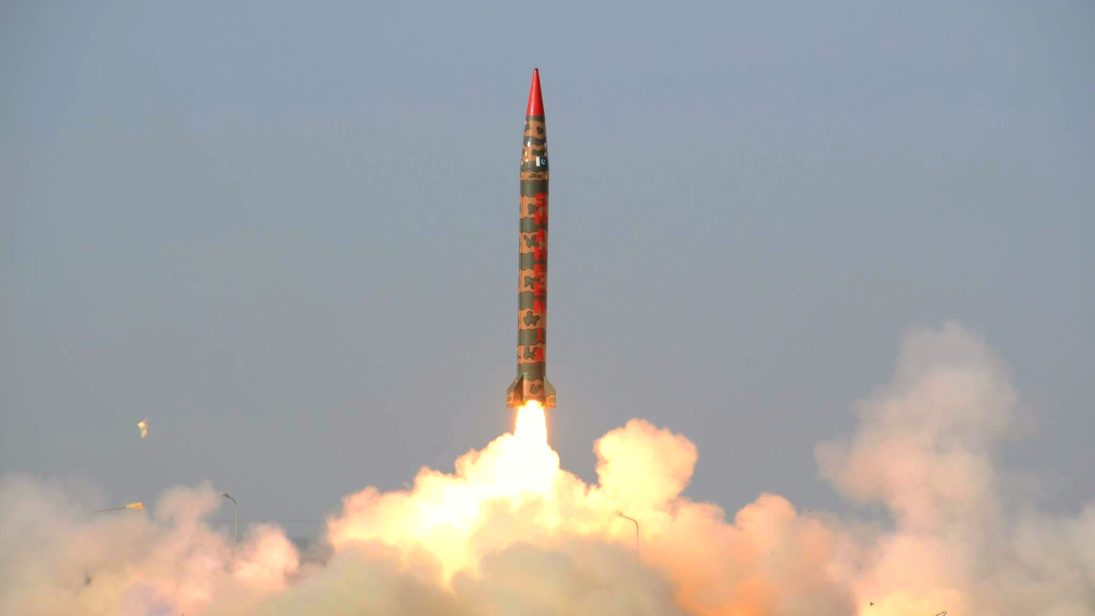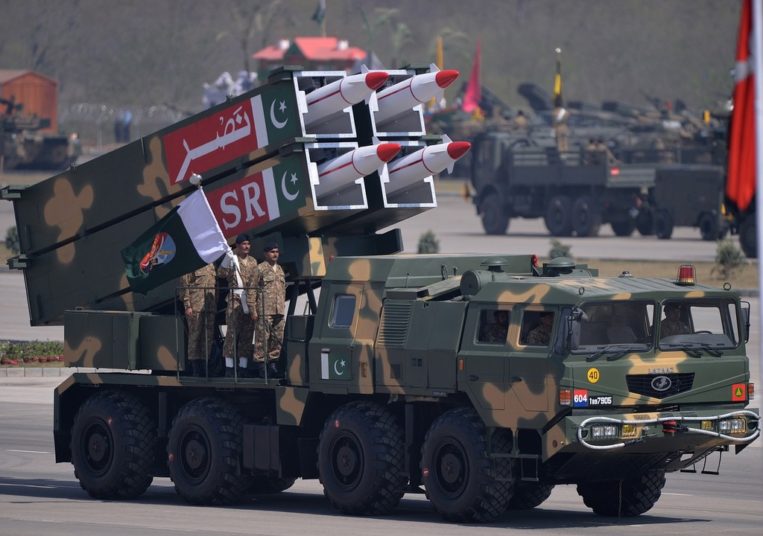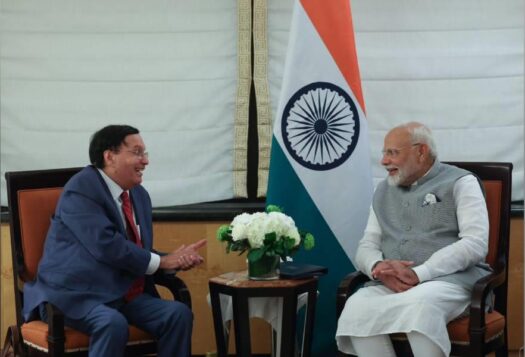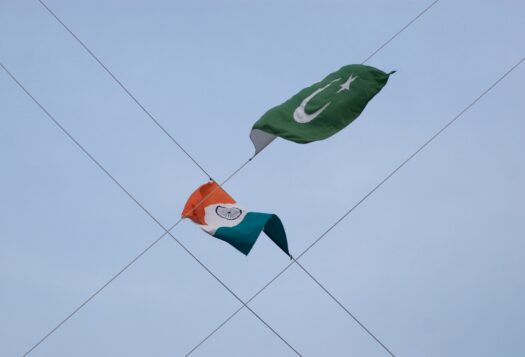
In 2018, analyzed Pakistan’s evolving force posture and outlined what is entailed in Pakistan’s nuclear doctrine of full-spectrum deterrence. With some analysts maintaining that Pakistan’s full-spectrum deterrence posture vis-a-vis India shaped its response after Balakot, her words, reproduced below, remain a timely assessment and comprehensive overview of Pakistan’s approach to deterrence in South Asia.
***
Twenty years ago, the government of Pakistan decided to respond in kind to India’s nuclear tests in May 1998. Pakistan conducted six nuclear explosions to India’s five, after which Pakistan’s then Prime Minister Nawaz Sharif declared, “We have settled the score.” Since then, Pakistan’s strategic deterrent has remained India-centric. However, the immense ambiguity surrounding Pakistan’s nuclear weapons program makes it challenging to ascertain the exact force goals or technological ends. The components of credibility and minimalism are subject to change in response to increasing Indian force capabilities. For this reason, Pakistani officials have said that “deterrence requirements remain dynamic” and that a particular number of nuclear weapons to meet the requirements “cannot be quantified.” In the last two decades, Pakistan’s nuclear doctrine and force posture evolved steadfastly from minimum credible deterrence to credible minimum deterrence in line with the dictates of full-spectrum deterrence (FSD).
FSD came to the fore in a press release when Pakistan tested the tactical nuclear weapon HATFIX/NASR in 2011. According to General Khalid Kidwai of Pakistan’s National Command Authority, the implications of FSD are many, but include the development of a nuclear capability to bring “every Indian target into Pakistan’s striking range” and acquire “appropriate weapons yield coverage and the numbers to deter the adversary’s pronounced policy of massive retaliation.” Kidwai also specified that another tenet of FSD is the liberty to select from a range of countervalue, battlefield, and counterforce targets.
Pakistan’s strategic leadership decided to gradually fill the strategic gaps in its force posture with nuclear-tipped missiles through air, sea, and land-based delivery systems to deny India any advantage in the warfare domain.
As mentioned in a 2018 article, the concept of FSD involves the following key assumptions. First, FSD maintains Pakistan’s India-centric policy and posture. Additionally, it seeks to buttress strategic equivalence vis-à-vis India and to deter threats ranging from sub-conventional to strategic levels (adding nuclear “rungs” to the escalation ladder). Moreover, though Pakistan regards nuclear weapons as “weapons of last resort,” it reserves the option of first-use against a nuclear weapon state; the development of tactical nuclear weapons was intended to reaffirm this policy. Lastly, FSD involves deterrence of all forms of aggression through a combination of conventional and strategic forces. This has in turn revamped Pakistan’s conventional warfighting doctrine, now titled “comprehensive response.”
After India’s proactive military operations strategy, commonly dubbed Cold Start, came to the attention of Islamabad, the need for improving Pakistan’s doctrine and force posture became evident. Since then, Pakistan’s strategic leadership decided to gradually fill the strategic gaps in its force posture with nuclear-tipped missiles through air, sea, and land-based delivery systems to deny India any advantage in the warfare domain. This doctrinal strategy is aimed at averting a conventional attack from India by “plug[ging] the gaps” in its deterrence posture. The last decade has seen major developments at the technological end, including the induction of low yield ballistic missiles, cruise missiles, Multiple Independently Targetable Re-entry Vehicles (MIRVs), and improvements to sea-based deterrence. To advance its counterforce targeting and reduce its vulnerability to India’s missile defense systems, Pakistan has placed an emphasis on its cruise missiles program, i.e. by testing sub-sonic cruise missiles such as Babur/Hatf-VII.
The increased number of missiles in Pakistan’s inventory demands an increase in the production of fissile material. To overcome fissile materials deficiencies and meet the present and future needs of these systems, Pakistan is constructing new reprocessing facilities at PINSTECH and CHASMA. There is no public discussion in Pakistan on these classified developments, though the construction can be seen through satellite imagery and is predictive of Pakistan’s force goals. According to the 2018 Bulletin of Atomic Scientists’ assessment of Pakistan’s nuclear forces, its current warhead count is between 140-150 warheads. Clearly, Pakistan’s full-spectrum deterrence policy is not compatible with the tenets of minimum credible deterrence.

Trends and Trajectories in Pakistan’s Force Structure
Since 1998 nuclear tests, Pakistan’s official position maintains that its deterrent is India-centric, which justifies developing a medium-range ballistic missile (MRBM) like Shaheen-III that can target all of India’s territory. However, Pakistan’s major defense partner, China, is cooperating to reduce vulnerability to their common adversary, India. In light of the burgeoning U.S.-India strategic partnership, Pakistan’s fears of Indian aggression have multiplied.
Under this security dilemma, Pakistan is boosting its defense build-up. Its deterrence strategy and force posture are starting to be geared towards a worst-case scenario that includes India’s strong military capabilities and support from the United States favoring India during a conflict. Some members of Pakistan’s national security establishment believe that Pakistan should be prepared for two scenarios: one in which India conducts a preemptive strike to eliminate Pakistan’s deterrent, and another in which the United States does so on India’s behalf. Perhaps, in this strategic calculation, intercontinental ballistic missiles (ICBMs) would serve as a deterrent against the United States to cease what the establishment perceives is Pakistan’s unwavering support of India. The development of ICBMs require a number of satellites and effective circular error probable (CEPs). On this technological front, Pakistan and China’s strategic cooperation is underway. However, there are internal debates within the Pakistani military on the rationale for testing an ICBM.
[Pakistan’s] deterrence strategy and force posture are starting to be geared towards a worst-case scenario that includes India’s strong military capabilities and support from the United States favoring India during a conflict.
The next important leg of FSD is the completion of Pakistan’s sea-based deterrence that ensures the survivability of its strategic forces, allowing second and third nuclear strikes options. Pakistan is preparing for a counterforce targeting strategy against India through land, sea, and air platforms. According to a press release, the submarine-launched cruise missile (SLCM) Babur-III provides Pakistan with a “credible second strike capability, augmenting the existing deterrence regime.” Trends indicate that Pakistan is likely to follow France’s naval deterrence strategy where it seeks to deploy a smaller nuclear-powered ballistic missile-carrying submarine (SSBN) and use other vessels for operational needs during crisis situations. It is likely that Pakistan will mate its French Agosta 90B-class submarines with the domestically manufactured SLCM, which has a range of 450 kilometers. Rawalpindi is also procuring Chinese Type 039A submarines that closely resemble French Agosta 90B-class and may also serve as a launch platform for Babur-III.
Conclusion
The full-spectrum deterrence doctrine, in the eyes of Pakistan’s defense establishment, assures a sound retaliation strategy against India’s massive retaliation doctrine. Rawalpindi firmly believes that FSD has reduced the chances of war in South Asia and deterred India from any Cold Start-type operational maneuvers in the near future. The current doctrine envisions a force posture with escalatory capabilities to counter Indian offensives through conventional and nuclear deterrence. Pakistani security planners have preconceived escalation dynamics in their minds and envision achieving “escalation dominance” in a conflict where India runs short of response options. To Pakistan, it appears to be a war termination strategy in a limited nuclear warfighting scenario. However, the history of warfare tells us that wars often turn out to differently than they are drafted on paper.
Pakistan’s current force posture walks a fine line between nuclear warfighting and a robust deterrence. With no No-First-Use affirmation, Pakistan’s build-up of offensive capabilities under a nuclear warfighting force posture is a recipe for possible nuclear use.
Editor’s Note: Ten years after the 26/11 attacks stunned Mumbai and nearly led to a military confrontation between India and Pakistan, the nuclear-armed rivals continue to update and transform their conventional and nuclear military doctrines, postures, and strategies. SAV contributors Joy Mitra, Ali Ahmed, Maimuna Ashraf, and Sannia Abdullah reevaluate whether India and Pakistan are exhibiting strategic direction or drift. Read the series here.
***
Image 1: PxHere
Image 2: PxHere


